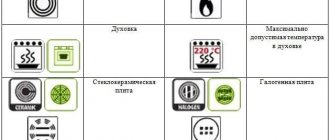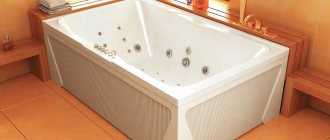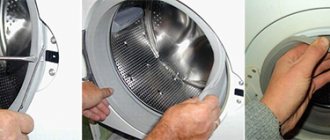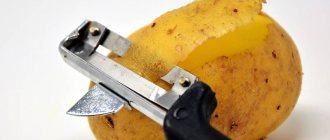Cast iron is a material familiar to distant ancestors. It has long been used for preparing drinks and dishes. But cast iron is a finicky alloy, and to use cast iron cookware for a long time, you need to follow the rules for caring for cast iron cookware, as well as storing and cooking food in the container. The most famous cast iron cookware is the frying pan, which is loved by housewives for its properties, simplicity and convenience. In this article you will learn how to care for a cast iron frying pan.
The most famous cast iron cookware is the frying pan, which is loved by housewives for its properties, simplicity and convenience.
Features of cast iron cookware
Like other materials, cast iron has characteristics that must be taken into account when purchasing and using, and care for the new product after purchase. Knowing these qualities, the housewife will understand how to properly care for a cast iron frying pan, and the container will serve her for a long time.
- There are two types of cookware: cookware made of pure cast iron or cast iron coated with enamel;
- Cast iron does not tend to rust;
- The alloy has poor thermal conductivity (the cookware takes a long time to heat up, but also takes a long time to cool down);
- He is not afraid of overheating, because the melting point is 1400C;
- The alloy has an impressive weight;
- Cast iron is a porous material, and oil is used in cooking to prevent food from burning, so you cannot cook on non-enameled cookware without oil.
Cast iron is not afraid of overheating, because the melting point is 1400C.
Each dish requires its own type of cookware, so it is better to familiarize yourself with the properties and features of this material. And according to the features, think about proper care of your cast iron frying pan.
Useful tips
What to do if the cast iron frying pan is uncoated. There are devices with:
- induction bottom;
- enamel processing;
- non-stick coating.
Often kitchen appliances are adapted for certain types of stoves. Cast iron pans for glass-ceramic hobs must be made of magnetic material. Glass ceramic dishes must have a flat bottom and this bottom should not have any roughness or nicks. Otherwise, energy costs increase and the surface of the slab is severely damaged.
Another option - cast iron frying pans and induction cookers - are well compatible, since cast iron has good ferromagnetic properties. For these stoves, special saucepans with an induction bottom are being developed. Cooking on an induction hob is completely environmentally friendly and safe. The operating principle of an induction cooker is to heat the cookware by induced eddy currents created by a high-frequency magnetic field with a frequency of 20-100 kHz. This frequency is not perceived by the human ear and therefore does not disturb everyday comfort. Considering the fact that cast iron is composed of iron and carbon, it is an excellent choice for an induction furnace.
Now induction cookers have appeared, which themselves determine the nature of the material installed on them, and if it is not ferromagnetic, the cooker does not turn on. The bottom of the dish must be flat, since a convex bottom can produce a hum, working like a diaphragm in an electromagnetic speaker.
The modern market offers a very wide selection of cast iron frying utensils. To understand which companies are better, you need to decide on your priorities:
- price;
- suitability for your cooker;
- aesthetic appearance;
- heaviness of the product;
- ergonomics, ease of use;
- wall thickness, purpose of cooking;
- reputation of the manufacturer, customer reviews.
When buying a cast iron saucepan, you must assume that even your grandchildren will be able to use this product, because these kitchen utensils are very strong and durable.
Daily care
Caring for cast iron pans is not easy. You must handle the product with care, do not throw it or force it. Basic care involves proper use in cooking, washing after cooking and storing the utensils.
To extend the life of the product, housewives apply a thin layer of oil after each use.
To extend the life of the product, housewives apply a thin layer of oil after each use. In this case, the porous surface structure will be reliably protected from the external environment.
How to Clean a Cast Iron Frying Pan After Cooking
How to wash a cast iron frying pan after cooking? There are several rules under which the product will be unfamiliar with soot and difficult-to-remove contaminants. It is important to wash dishes immediately after preparing food. This should be done in hot or warm water so that the fat is washed off well. Do not use a rough metal surface to wipe off dirt: choose plastic sponges and scrapers. Dry it thoroughly and place it in the designated storage area.
It is important to wash dishes immediately after preparing food.
Dry the pan thoroughly after washing to avoid rust, use the oven for good results.
Preparing non-enamel cookware. Removing factory grease
If a new frying pan smells unpleasant, it has been treated with cable lube. The smell is not a reason to refuse a purchase. After firing, it disappears without a trace. The operation of treating a cast iron frying pan before first use is simple. Even a young housewife can handle it at home. You should begin preparing for firing by washing the dishes in hot water. To do this, use mild dishwashing detergents. Only after this they begin heat treatment.
By properly preparing a cast iron frying pan for its first use, you will significantly extend its service life.
The following is used as a fat composition for calcining cast iron:
- Pork lard, it burns out slowly, does not smell much (a piece is skewered on a fork and wiped over the surface);
- Goose or pork fat (a very thin surface layer is formed);
- Margarine, other degraded vegetable fats (they smoke less when heated);
- Refined vegetable oils (they smoke, but are easily applied with a silicone brush and form an even deposit).
For reference: all fats, vegetable and animal, are capable of creating a protective film on cast iron. The period of its abrasion depends on operating conditions, and not on the component composition.
How to store a cast iron frying pan
How to store a cast iron frying pan? There are several rules for storing such a frying pan to extend the life of the product.
- Do not place the product near corrosive chemicals;
- Keep the cast iron product clean and dry, free of food residues;
- After cooking, if possible, transfer the dish to another container to reduce contact with food;
- Make sure there is ventilation in the storage area of the frying pan;
- Do not place other dishes on the frying pan as they should not be subjected to heavy loads.
Keep your cast iron product clean and dry, free of food residues.
Monitor the humidity of the place where the frying pan is located - moisture will damage the product.
Preventing rust
Cast iron cookware can rust when exposed to water and various acids. To prevent rust, you need to follow some rules.
- Firstly, before use, the product must be calcined, that is, heated for 30 minutes and then repeat the procedure with vegetable oil. This is done to burn out the industrial composition - manufacturers coat the container against rust.
- Secondly, water is the main enemy of cast iron. Any contact with her must be avoided. Dry and wipe dishes well after washing.
- Thirdly, do not store food in dishes. Food causes oxidation, which eventually leads to rust.
The product must be calcined before use.
Why calcinate the frying pan? What tasks does calcination perform?
Before use, any utensils must be washed, including cast iron. But this is not enough. Why is heat treatment of cast iron necessary after purchase? To improve the performance properties of products, deep treatment from harmful components of industrial lubricants.
During production, the frying pan is coated with an anti-corrosion compound so that rust does not form on the surface during storage and transportation. Washing does not completely remove the protective layer. Cast iron is a porous metal; harmful components accumulate in microscopic cavities. Calcination gets rid of them completely. During heating of cast iron products, a manufacturing defect or counterfeit is detected:
- Violations of the homogeneity of the structure are manifested by deformation;
- Deep cracks appear on the surface;
- Cavities and other defects become obvious.
Good cast iron changes color after firing and becomes brownish.
Low-quality alloys crack, painted dishes burn and change color. You cannot use such utensils. Good cast iron changes color after firing and becomes brownish. After cooling, the dishes turn black.
A dense film forms on hardened cast iron; it acts as a non-stick coating and protects the metal from destruction under the influence of food acids and alkaline environments. The pre-calcination operation is provided by the manufacturer. This is written in the operating instructions or on the packaging. Before use, it is necessary to treat any uncoated cast iron cookware; frying pans of any modification, domestic or imported, are subjected to heat treatment. This is a mandatory technological operation.
During heat treatment, small pores in cast iron are clogged, food particles do not get into them, and food does not burn during cooking.
Preventing carbon deposits
Soot on a cast iron frying pan cannot be avoided, because over time the non-stick layer wears off and food begins to stick. You can delay this moment as much as possible by properly caring for your cast iron.
- Always keep an eye on the dish when cooking on it - many do not have a non-stick coating and can be seriously damaged when removing the burnt layer;
- Follow the rules for washing dishes after cooking and the natural layer on it will not be damaged.
Always keep an eye on the food when cooking on it.
Caring for old dirty dishes
If it so happens that old dirt remains on the dishes, clean the cast iron in different ways. There are several simple ways to wash a cast iron frying pan after cooking effectively and without damaging the coating or the material itself. This is especially true for caring for a cast iron grill pan, because grilling is a long and tedious process, and the food often sticks and remains on the product.
- A solution of glue, soda and washing powder. All these components need to be diluted with water and a frying pan placed in this container. Then boil for two hours;
A solution of glue, soda and washing powder will help you get rid of carbon deposits. - Acetic acid will help remove burnt fat. Gently wipe the surface with it and then rinse thoroughly so as not to expose yourself and your family to danger;
Acetic acid will help remove burnt fat. - A new assistant in the kitchen of housewives is Coca-Cola. Just leave the cast iron in a tasty drink overnight and the next morning you won’t recognize it – the old dirt will simply fall away.
Old dirt will simply fall away thanks to Coca-Cola.
Do not clean cast iron with strong acids or harsh materials as this material may be severely damaged.
It is better to clean contaminated cast iron immediately, so as not to subsequently resort to extreme measures using acids and hard surfaces.
How to prepare a frying pan before first use
When purchasing cast iron cookware, you need to know the algorithm for preparing it for use.
Removing factory grease
First, remove the factory oil coating from the product, then you need to create a new one.
You can remove grease using ordinary table salt. To do this you need to use the following instructions:
- the frying pan must be thoroughly washed using any cleaning agent;
- wipe dry;
- The dishes are placed on the fire so that the remaining moisture evaporates;
- a layer of salt 0.8-10 mm thick is poured onto its surface;
- the salt needs to be heated, stirring regularly until its color changes and it begins to “shoot”;
- crystals must be carefully collected and disposed of;
- The frying pan is washed with running water without cleaning agents or soap;
- at the final stage, the surfaces are thoroughly wiped.
The duration of calcination depends on the thickness of the cast iron and the size of the container. In this case, it is necessary to pay attention to the color of the dishes: if it begins to turn gray and smoke stops leaking from it, the task is completed. Salt allows the pores of the material to draw out the remaining lubricant composition.
Season with salt
A brand new pot or frying pan can be heated with salt. This is done according to the following scheme:
- salt is poured into a dry frying pan in a thick layer;
- then place it on a gas or electric burner;
- You can stir the salt with a wooden spatula;
- ignite the container for 10-15 minutes;
- then the salt crystals should be thrown away, and the dishes should be wiped dry and put back on the fire;
- At the final stage, vegetable oil must be applied to the surface of the frying pan.
Heat with oil
The main disadvantage of this method is that it requires a large amount of oil. Therefore, it is better for them to process small-sized products. Processing is performed according to the following scheme:
- first, purchase any vegetable oil (deodorized or refined);
- the oil must be poured into a saucepan or frying pan;
- over low heat, the oil composition must be brought to a boil, then slightly reduce the intensity of the burner;
- you need to heat the pan for 25-30 minutes, stirring the oil regularly;
- After this, you can turn off the heat and let the pan cool.
With this calcination, a special protective layer is formed on the cast iron surface, which will save the food from burning. After baking, you just need to wipe all surfaces with paper towels.
A simple way to bake in the oven
If a cast iron frying pan has large dimensions, it is better to heat it in the oven. This will minimize the likelihood of burns. However, this method is not suitable for pots and pans with plastic or wooden handles. If the handles are removable, they must first be removed.
Calcination is carried out according to the following instructions:
- Prepare the oven. Cast iron items should be annealed on a metal grate. Place it so that the cookware fits completely inside the oven.
- To avoid staining the bottom of the oven with oil, you can place a baking sheet covered with a layer of foil.
- The oven must be turned on and heated to +150…+180°C.
- Rub the sides of the dish with oil.
- After this, the saucepan, cauldron or frying pan is placed upside down on the grill and left for 30-35 minutes.
- After the time has passed, the product is removed from the oven, re-treated with vegetable oil and put back into the oven. It is recommended to repeat the procedure at least 3 times.
- After this, turn off the oven and leave the pan to cool. Excess oily deposits are removed using paper napkins.
Restoring non-stick properties
Burnt dishes cause big trouble for housewives. This can be avoided by using products with non-stick coating. But how to restore the coating on it if it has been damaged?
There are a few simple rules:
- Wash and dry the pan thoroughly;
- Next, we use salt: cover the bottom of the dish with it and place in a preheated oven or frying pan for no more than an hour;
- After calcination, treat the surface with oil;
- If the procedure does not produce results, you need to repeat it again.
Handle the hot product carefully - the heavy weight of cast iron and high temperatures make the work quite difficult.
Handle the hot product carefully - the heavy weight of cast iron and high temperatures make the work quite difficult. Hold it by the handle and use oven mitts.
In the old days, people almost always used products to prepare their favorite and delicious dishes.
How to care for a cast iron frying pan? This is serious work in which you need to follow many rules and criteria. But if they follow the instructions, such utensils will last a very long time and will not harm the family with corrosion or burnt dishes. It is no coincidence that in the old days people almost always used products to prepare their favorite and tasty dishes, for example, pancakes or cutlets. They knew how to care for a cast iron skillet. Particular attention should be paid to caring for an uncoated cast iron frying pan, since pure cast iron without coating and impurities is more exposed to the external environment.
How to clean a non-stick cast iron frying pan
Cast iron frying pans are coated with non-stick materials. This layer neutralizes the weak point of cast iron - the pores. Under no circumstances should non-stick cookware be baked like regular uncoated cookware. The main task is not to damage the top layer.
Typically, cleaning a nonstick cast iron skillet after frying is a breeze. If the protective layer is not damaged, and there were no “emergency situations” during the cooking process that resulted from the housewife’s mistakes, it is enough to wash the surface with a soft sponge and detergent.
Sometimes food does burn, but under no circumstances should you use cleaning agents or hard sponges. Try adding water and leaving for literally five minutes. If it doesn’t come off, put it on the stove and heat the water. It happens that only boiling helps.
Please note that you cannot fill frying pans with a ceramic coating with water; read about the features of caring for them in our other article. Most often, problems with burning and sticking begin when the coating is damaged.
You should not wash such a cast iron frying pan. It is better to get rid of it mercilessly if the manufacturer does not indicate in the instructions that after damage to the protective layer the dishes are harmless. But be prepared that rust may appear in areas of abrasion or scratches.
Most often, problems with burning and sticking begin when the coating is damaged. You should not wash such a cast iron frying pan. It is better to get rid of it mercilessly if the manufacturer does not indicate in the instructions that after damage to the protective layer the dishes are harmless. But be prepared that rust may appear in areas of wear or scratches.
If you properly wash and store a cast iron frying pan, it will last for several decades. Many families have cauldrons left over from their great-grandmothers. Isn't this evidence of the durability of the material?











